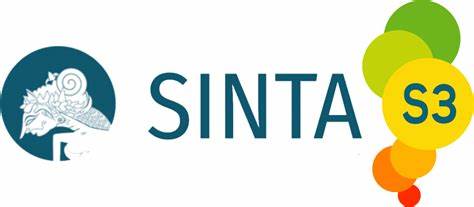DEFENSE OF SUNDANESE IN CHILDREN USING A BILINGUAL PICTURE STORYBOOK: A PSYCHOLINGUISTIC APPROACH
DOI:
https://doi.org/10.22460/eltin.v11i1.p1-10Abstract
Language as an embodiment of the human mind has a relationship with the field of psychology. The phenomenon of families who speak Sundanese but prefer to teach Indonesian and foreign languages to their children is what inspired this research. If left unchecked, there will be a shift and the potential to cause the extinction of the Sundanese language. This study aims to describe the phenomenon of Sundanese-speaking families who choose to teach Indonesian and other languages to their children, resulting in widespread adoption of Indonesian and foreign languages in the family. This research method is qualitative with interview and observation approach. There are five children from five different schools. Each child was treated by giving readings in the form of bilingual picture story books. Researchers also interviewed each child. The test was carried out for three times, namely pre-test, cycle 1, and cycle 2. The test results showed that giving readings with bilingual picture story books could increase the mastery of Sundanese vocabulary in the five children as respondents. According to the findings of this study, treatment with bilingual picture story books can preserve Sundanese in children and lead to an increase in Sundanese speakers from an early age.
References
Antonius, Porat. (2018). Psikolinguistik: Memahami Aspek Mental dan Neurologis Berbahasa. Jakarta: Gramedia Pustaka Utama.
Arabski, J. & Wojtaszek, A. (2010). Neurolinguistic and Psycholinguistic Perspectives on SLA. Bristol: Multilingual Matters.
Aslinda dan Syafyahya, L. (2010). Pengantar Sosiolinguistik. Bandung: Refika Aditama.
Hidayat, S., & Nur, L. (2018). Nilai Karakter, Berpikir Kritis dan Psikomotorik Anak Usia Dini. Jurnal Ilmiah Visi, 13(1), 29-35.
Ibda, H. (2017). Urgensi pemertahanan bahasa ibu di sekolah dasar. SHAHIH: Journal of Islamicate Multidisciplinary, 2(2).
Meisel, J.M. (2011). First and Second Language Acquisition: Parallels and Differences. Cambridge: Cambridge University Press.
Moleong, L.J. (2017). Metodelogi Penelitian Kualitatif: Edisi Revisi. Bandung: PT Remaja Rosdakarya.
Mulatsih, D. (2014). Pergeseran dan Pemertahanan Bahasa di Wilayah Pangandaran. LOGIKA Jurnal Ilmiah Lemlit Unswagati Cirebon, 10(1), 28-41.
Selvia, A. P. (2014). Sikap pemertahanan bahasa Sunda dalam konteks pendidikan anak usia dini (kajian sosiolinguistik di Desa Sarireja, Kecamatan Jalan Cagak, Kabupaten Subang). Jurnal Bahtera Sastra Indonesia, 1(2).
Sobarna, C., Gunardi, G., & Afsari, A. S. (2019). Toponim dalam Upaya Pemertahanan Bahasa Sunda di Wilayah Jawa Tengah: Kasus di Kecamatan Dayeuhluhur, Kabupaten Cilacaplam Upaya Pemertahanan Bahasa Sunda di Wilayah Jawa Tengah: Kasus di Kecamatan Dayeuhluhur, Kabupaten Cilacap. Makna: Jurnal Kajian Komunikasi, Bahasa, dan Budaya, 4(1), 154-173.
Steinberg, D.D. & Sciarini, N.V. (2006). An Introduction to Psycholinnguistics. Edinburgh: Pearson Longman.
Suyadi. (2010). Psikologi Belajar PAUD. Yogyakarta: PT Pustaka Insan Madani.
Traxler, M.J. (2012). Introduction to Psycholinguistics: Understanding Language Science. Chicester: Wiley-Blackwell.
Widianto, E. (2018). Pemertahanan bahasa daerah melalui pembelajaran dan kegiatan di
sekolah. KREDO: Jurnal Ilmiah Bahasa dan Sastra, 1(2), 1-13.





